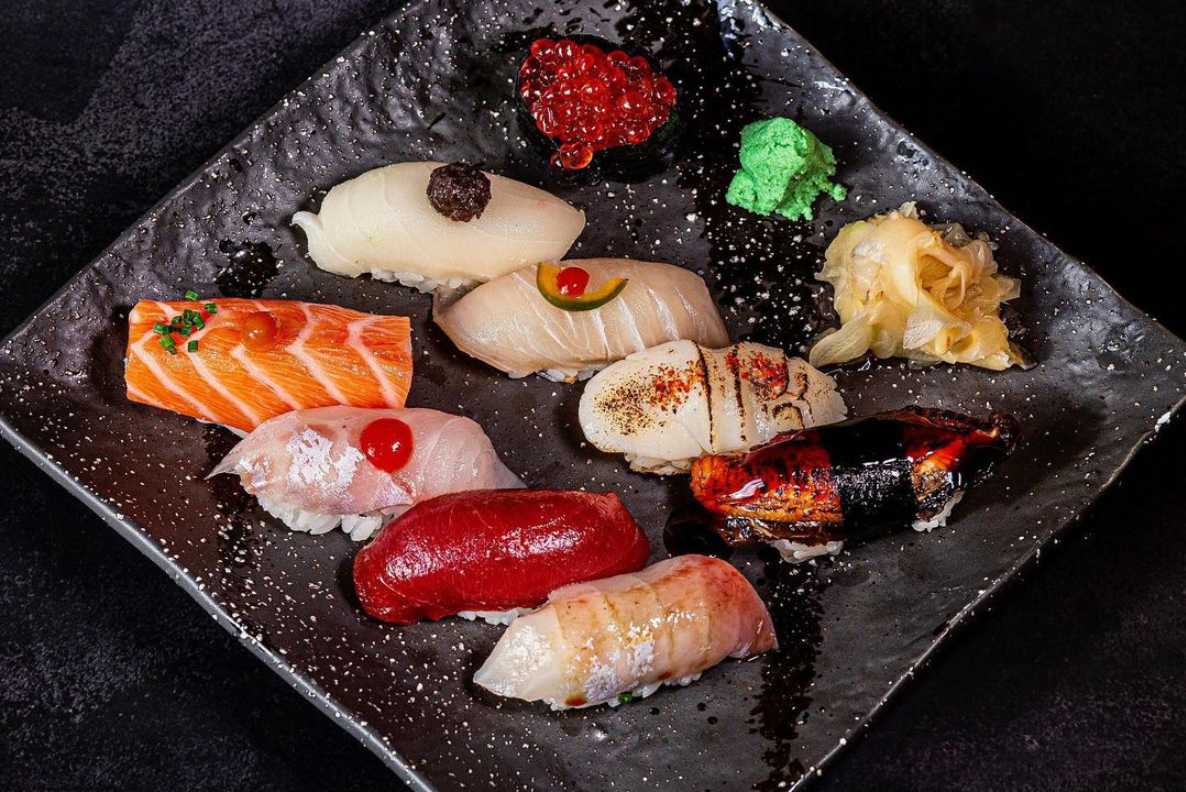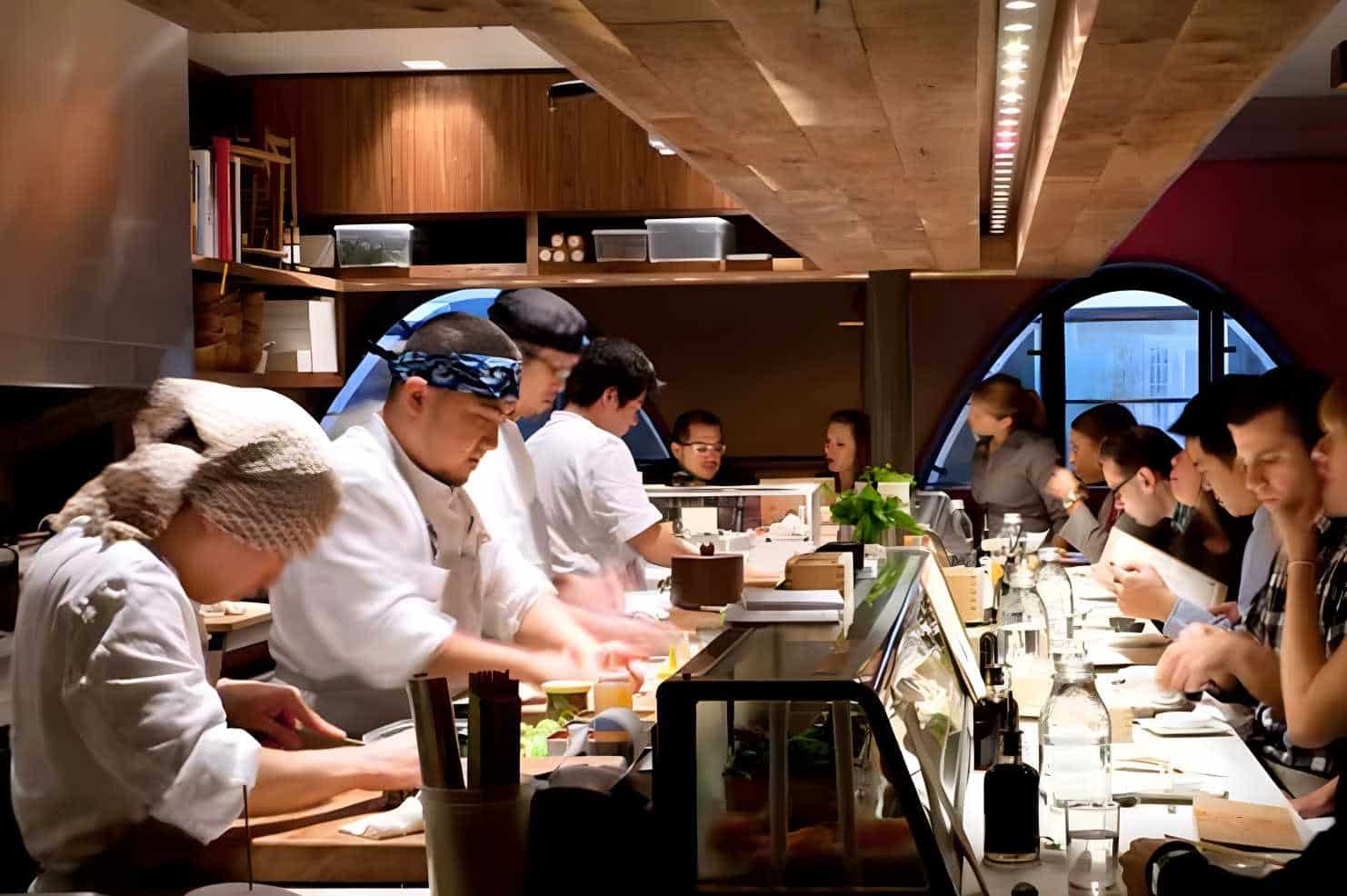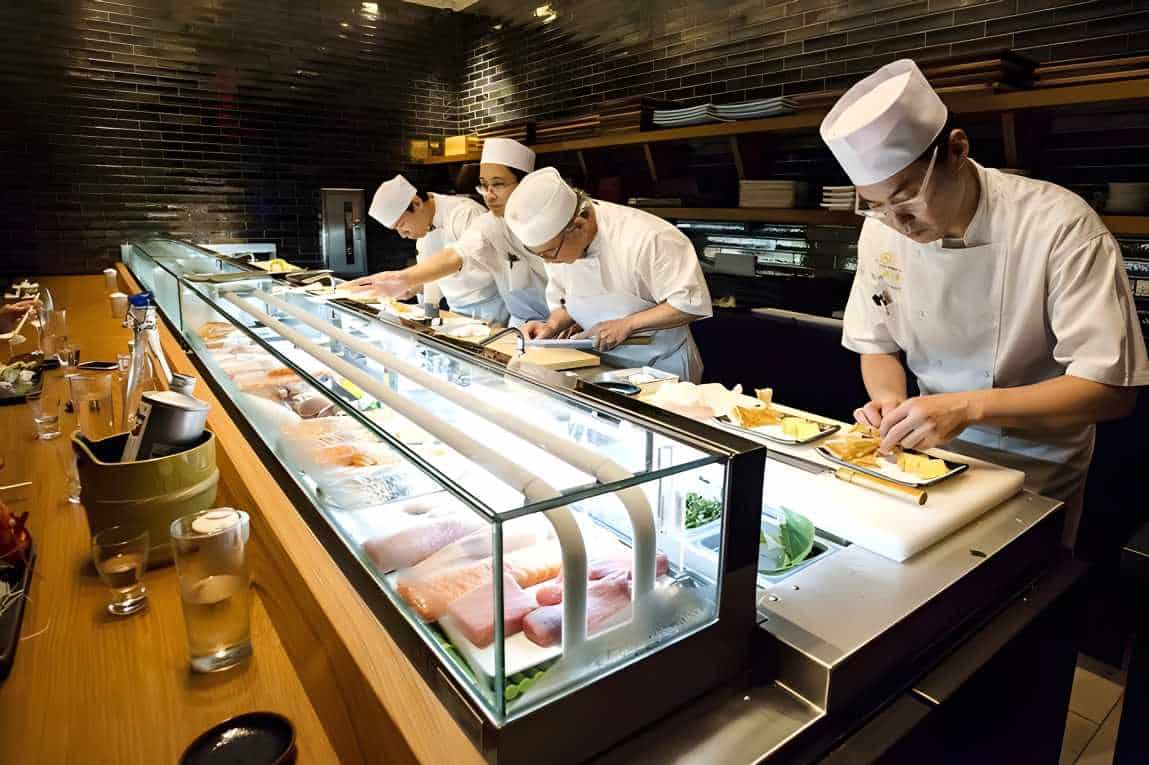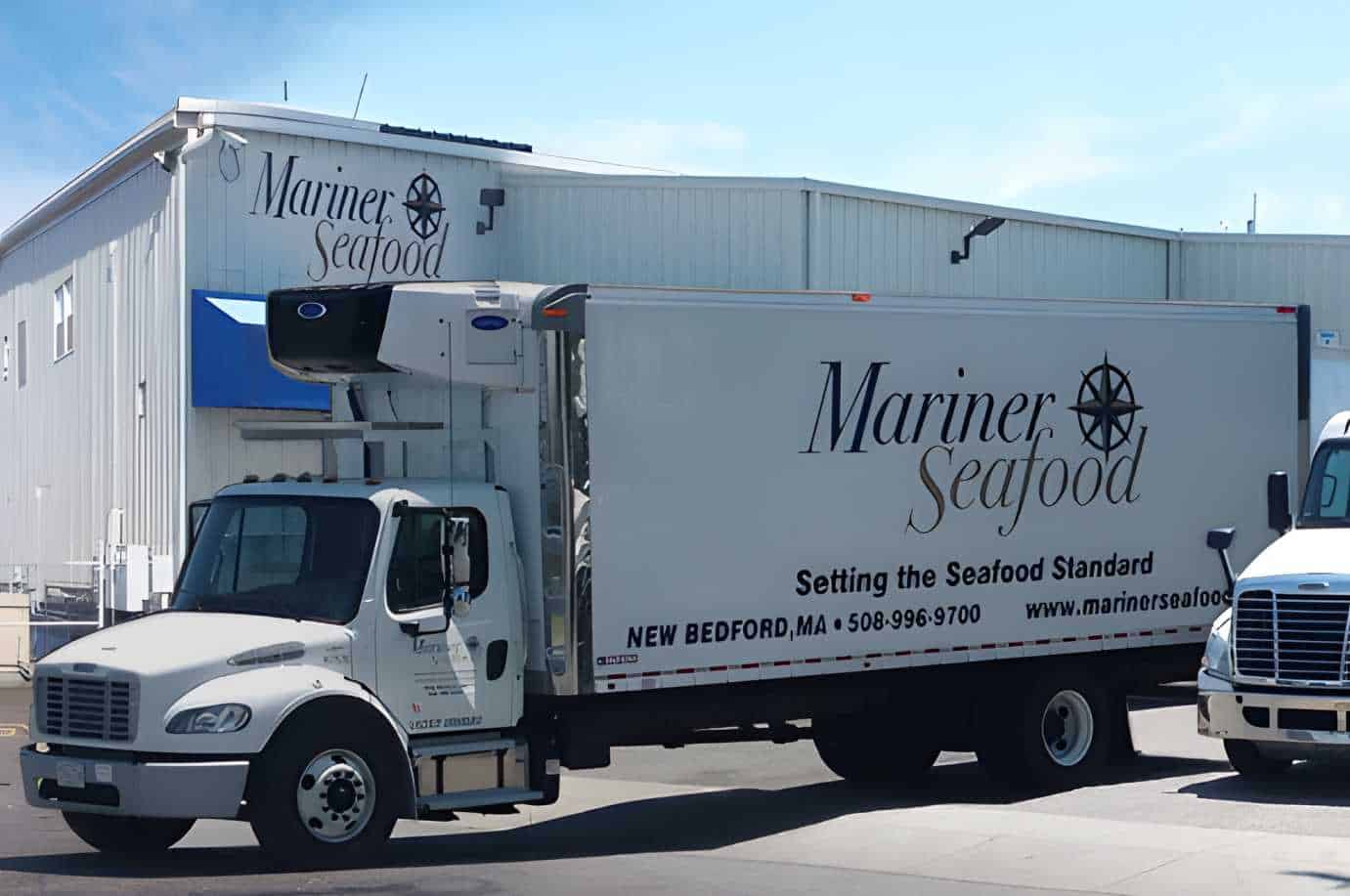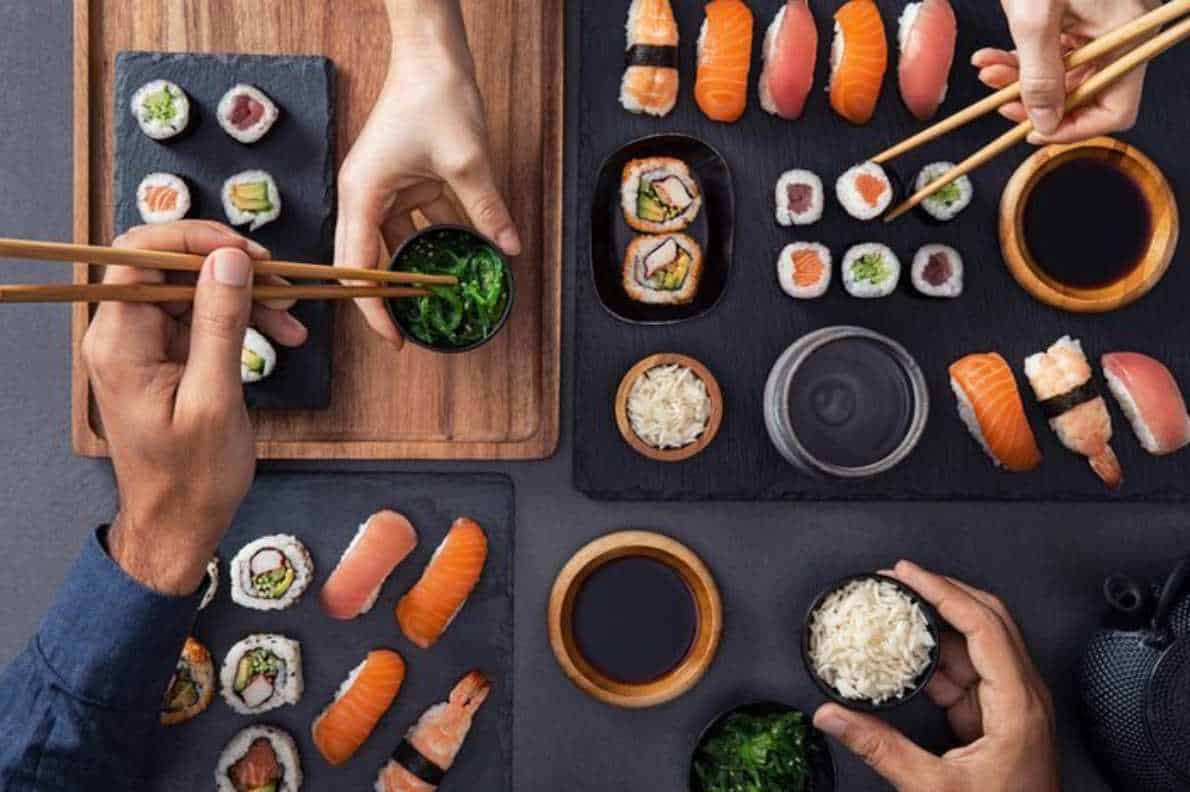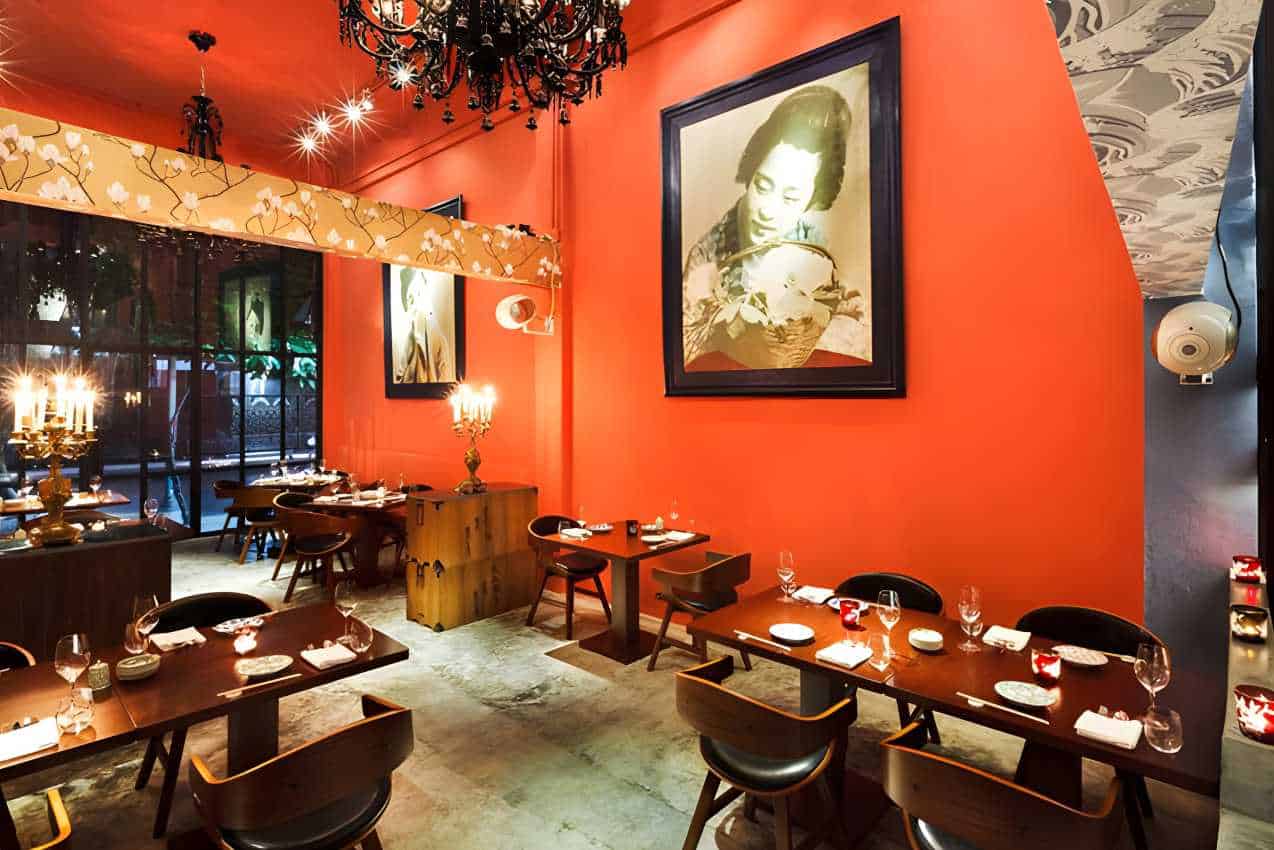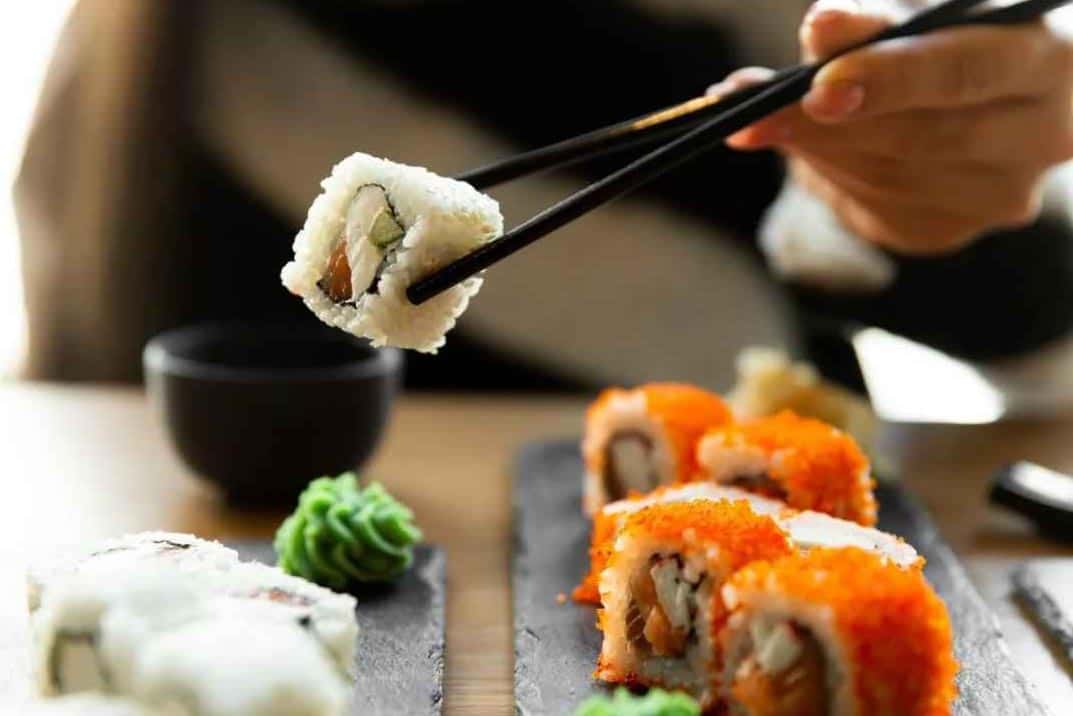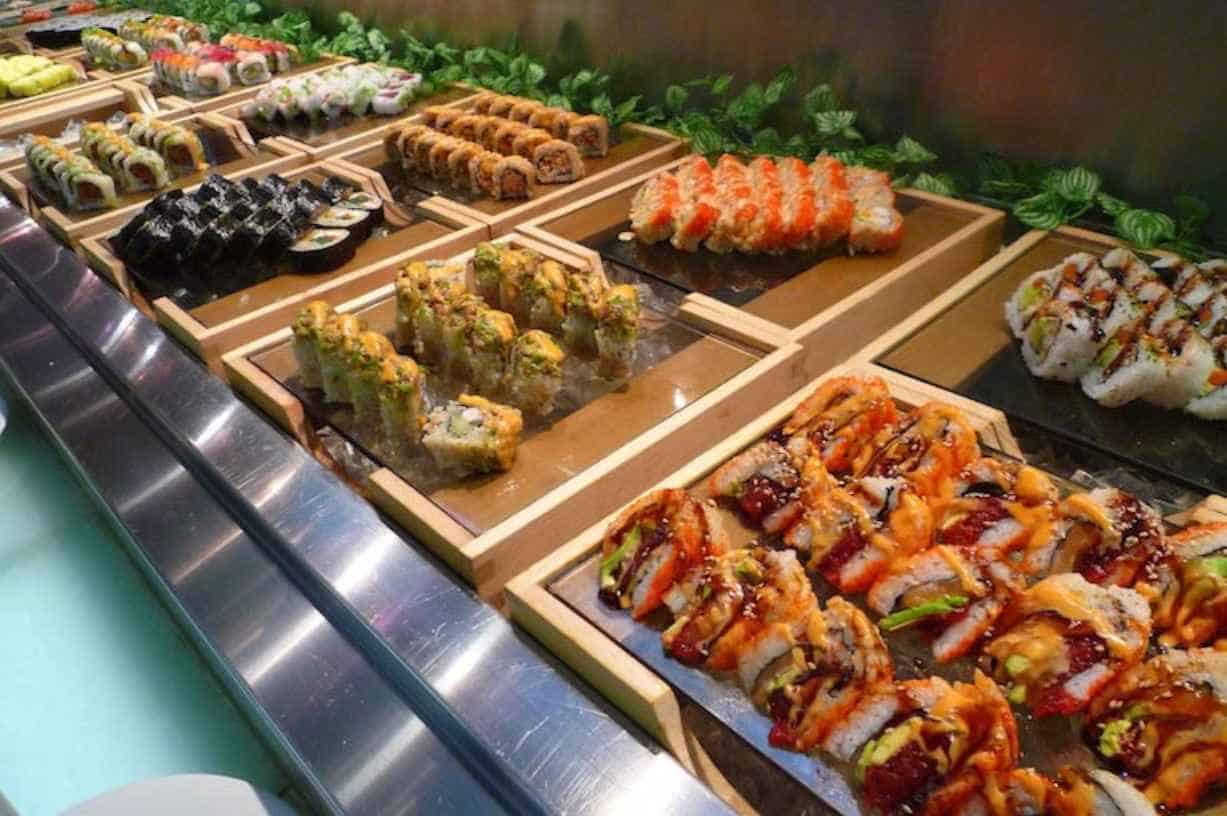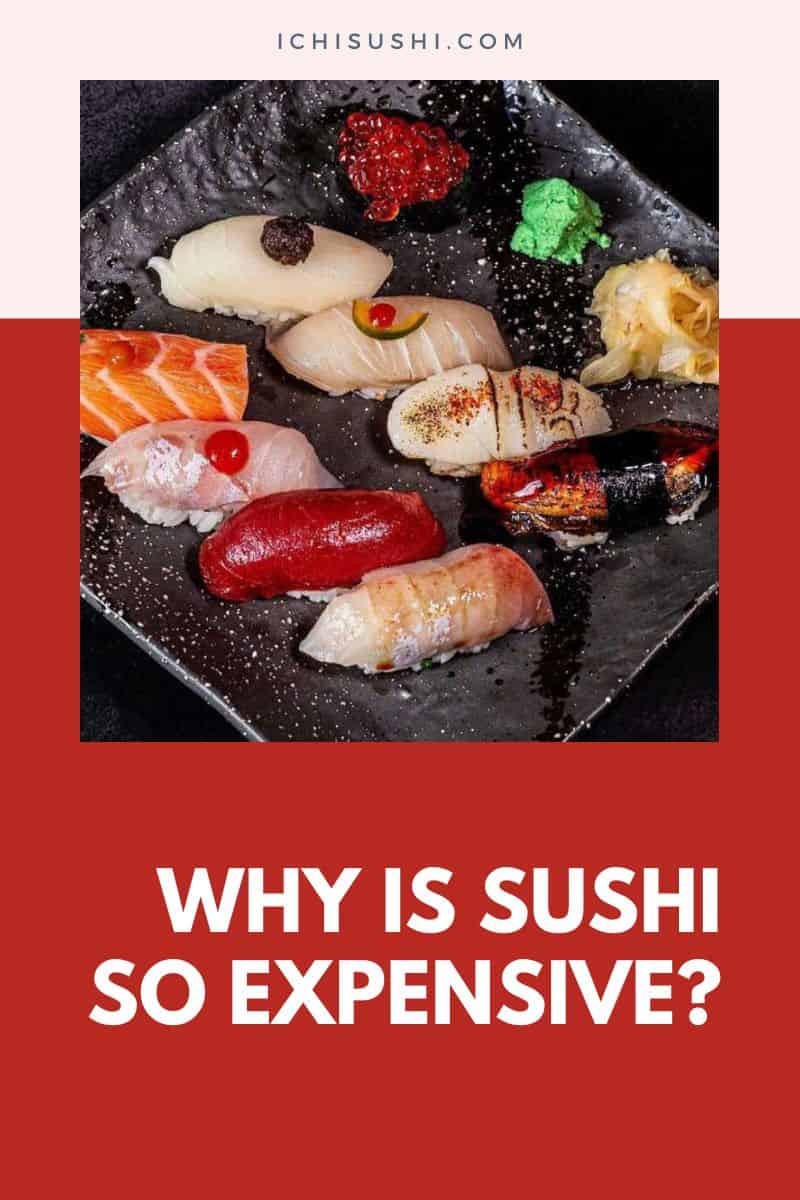You can find sushi restaurants in almost every major city on the planet. Sushi is a popular Japanese dish enjoyed by millions. However, why is sushi so expensive?
It is frequently much pricier for rice, raw fish, and seaweed. You might wonder what makes this Japanese dish so prized.
7 Factors Making Sushi So Expensive
The pricing is the one major drawback that many sushi fans encounter. The following are a few of the key reasons.
1. Cost of Ingredients
Sushi necessitates high-quality fish, which is expensive. It’s essentially fish and rice, so the fish must taste great and have a good texture. If not, customers will quit buying it.
The cost of high-quality fish that you can eat raw is high. There’s no cooking involved. You only need a small amount of sauce. It’s critical to utilize high-quality fish.
Much of the seafood used in sushi rolls is imported. Unfortunately, restaurants lack access to the fish required. Therefore, they must import seafood. Imported seafood will cost more due to the travel necessary to reach the restaurant.
Sushi businesses must also deal with two significant issues: seafood discoloration and spoilage.
You may be aware that fish are more susceptible to this than vegetables and meats. You can eat discolored fish. However, you can’t use it in a sushi restaurant.
After filleting the entire fish, the head, bones, and other parts are discarded. These wastes effectively double or triple the price of the fish.
If you’re a sushi lover, you’re aware that certain establishments use superior seafood. These places will almost certainly price a little extra. As a sushi enthusiast, this shouldn’t deter you.
Sushi requires a specific type of rice in addition to seafood. This rice has a short grain and is sticky to hold the sushi together.
Sushi rice is a specific variety that is stickier due to its high starch content, which can sometimes be more expensive than common long-grain varieties like basmati.
Restaurants must acquire the expensive sushi rice to offer the highest quality cuisine. This effort raises the price of the finished product.
Authentic wasabi, which is rare and difficult to grow, is often replaced with a mixture of horseradish, mustard, and green food coloring outside of Japan. Often, it’s merely horseradish that has been colored green. As a result, sushi restaurants must import it from Japan. Wasabi resembles horseradish in appearance, but it has a distinct flavor.
2. Preparation and Labor
Sushi is extremely labor-intensive to make, contributing to the high price. The chef must produce the rolls by hand. Also, the delicate ingredients are meticulously assembled and elegantly arranged on the platter.
Sushi platters are both visually appealing and delicious. Therefore, a lot of effort goes into the dish presentation.
The cost of sushi is influenced not only by the ingredients but also by the labor-intensive preparation and artistic presentation. However, it is a very healthy food that can make you feel content. Even though it’s pretty pricey, it’s pleasing to the eye, tastes terrific, and keeps you from feeling overly full.
3. Professional Training and Experience
When preparing sushi, a cook or chef must possess various high-level skills. These include handling seafood, preparing rice, and selecting which flavors go well.
Sushi making is no easy task. Chefs also have to be extremely precise and incredible in their knife skills. Have you ever seen a sushi chef cut slice fresh salmon so thinly? Amazing, right?
Learning sushi preparation is costly and can take a decade. Thus, chefs earn a premium income, meaning the food should cost high.
Furthermore, you’re paying for delectable perfection when dining at a high-end sushi restaurant. The rice is cooked perfectly after being cleaned and soaked to discard excess starch.
Rice vinegar, salt, and sugar are blended into warm rice before cooling to make genuine sushi rice. Lousy rice equals terrible sushi.
4. Dining Location
The place where you eat your sushi rolls will significantly impact the sushi’s price. New York and California are home to some of the costliest sushi.
These places have minor issues obtaining fish and crab for sushi rolls. However, the market allows them to charge higher prices.
Also, if you reside in a tiny town outside of a major city, you may have to pay much for sushi. Small-town businesses need to go great lengths to get sushi delivered to their doors. This added cost reflects in the pricing.
5. Marketing and Prestige
Sushi is marketed as a prestigious luxury item. It is regarded as cuisine that only the wealthy would eat because they have money and the palate. A sushi lover will still buy sushi even if the price soars.
Sushi is more of a want than a need. It’s like other high-end foods, such as lobsters and other seafood. It is deemed hip, cool, or trendy, so the demand increases. Hence, the price will rise.
Of course, anyone can eat sushi. However, there are times that it is targeted at a specific demographic. Sushi prices will rise as a result.
Sushi attracts Otaku, a Japanese phrase to describe persons who have obsessive hobbies. Some people are willing to go long distances for the best sushi.
As sushi became more popular, the flavor palettes matched the geographic reach. Regardless of your previous sushi experiences, the dish is still well-known worldwide.
Sushi is relatively inexpensive in Japan, although the quality is maintained. This truth comes as no surprise since sushi is more widely consumed there. Restaurants benefit from economies of scale.
The good thing about sushi is that it is trendy among college students and young people.
They think it’s fun to socialize and spend a night out with pals. So, sushi prices can increase. Yet, these people aren’t always associated with having much money.
6. Ambiance
If you’ve dined in a sushi joint, you know that the experience is often more important than the meal. Thus, you frequently find yourself paying for that particular experience.
Masa in New York is now the priciest sushi restaurant in the country. Dining there is challenging since it only seats 26 people by reservation.
Have you already witnessed a sushi chef in action? Eating at establishments where the sushi chefs are visible to the customers is one of a kind. Restaurants may charge extra for service because of this unique experience.
7. Other Expenses Involved
Keep in mind the costs of transportation, freezing, and prior preparation. All these factors contribute to the overall cost.
Living near the water does not result in considerably lower sushi prices. A lot of sushi fish isn’t caught locally. Thus, the fish must travel.
There is also a common misperception that sushi requires only the freshest fish. However, much sushi seafood is frozen, particularly those purchased from restaurants.
Freezing certain types of fish makes them safer to consume. It can be challenging to kill parasites if you don’t cook the fish. Freezing adds to the expense due to the equipment and energy use.
Overall, there is a substantial cost involved before the sushi reaches restaurants. They spend a significant amount to deal with these distinct factors. This complexity raises the price of the finished product.
5 Hacks to Get Cheaper but Quality Sushi
1. Check lunch/evening specials
Many sushi restaurants offer lunch specials within the week. These options can significantly reduce your bill.
Go over the eatery’s menu to determine when lunch specials are available. You may also phone ahead. Sushi restaurants usually do not offer lunch specials on weekends.
Another option is to check restaurants that have specials on weeknights. Tuesday nights are sometimes sluggish for eateries. Thus, they may offer special pricing or discounted deals on sushi rolls.
2. Visit local restaurants
Depending on where you reside, this may not be a perfect solution. However, in many cases, fantastic sushi is not far away.
You can choose locations closer to your home and save money. Review sites like Yelps help locate local, excellent sushi restaurants.
3. Go to “All-You-Can-Eat” buffets
At all-you-can-eat sushi restaurants, you gain access to an entire menu. You can eat as much as you can for a set charge. There are salmon rolls, California rolls, and tuna rolls aplenty.
If you eat at one of these eateries, you may get charged for excessive waste. So, begin with a small order. You may always add more later.
All-you-can-eat sushi restaurants make sense if you are an avid sushi fan. This deal isn’t something you’ll do every time you eat out. It’s best to avail these deals for special occasions.
All-you-can-eat sushi will most likely cost approximately two to three rolls. This deal is a good option if you can consume more than that. However, it will cost you more if you can finish a single roll only.
4. Make your sushi
Sushi making is something you can learn. Many individuals who begin preparing sushi at home discover that they enjoy it more.
You can create your signature sushi that matches exactly. How would you like to modify the flavors? You may save some money by making your sushi rolls at home.
5. Explore alternatives
Today’s sushi comes in various shapes and sizes. It will help if you experiment when you desire something different.
Sushi burritos have been famous in the sushi industry due to their convenience and low price. They typically range from $8 to $15. Poke bowls are also an excellent choice. It’s like deconstructed sushi but with a lot more seaweed.
Summary
Why is sushi so expensive? Numerous factors contribute to the price. The skill required and the cost and transport of the ingredients are essential.
Sushi preparation is extensive in getting the fish from the sea to your plate. Indulging in sushi may be costly, but it’s worth the price.

Hiroshi Nakamura, a Tokyo-born sushi chef turned US-based writer and critic, is the voice behind ichisushi.com, blending traditional sushi wisdom with modern insights.
